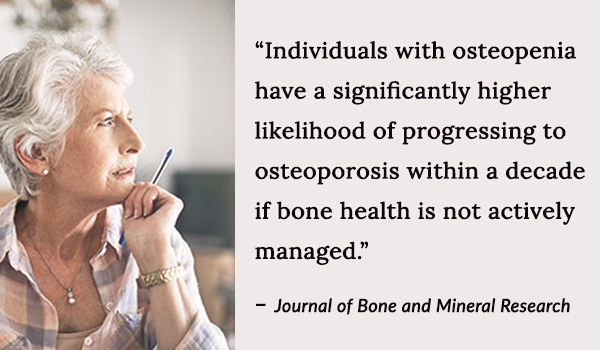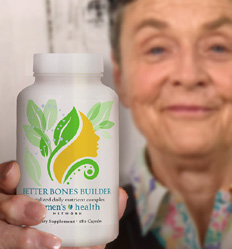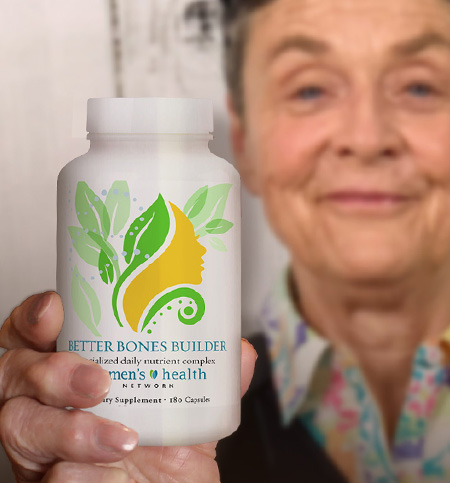By Dr. Susan E. Brown, PhD
Some clients come to me wondering about the difference between osteopenia and osteoporosis. Often, they have been told that their “diagnosis” of osteopenia means they need bone drugs to prevent a life-altering fracture.

I’m not surprised by their confusion. Most physicians are just as confused when it comes to fracture risk. But the evidence is clear: osteoporosis and osteopenia are not the same thing. And their risk of fractures is not the same either.
The difference is that osteoporosis suggests a disease process while osteopenia is a description of lowered bone density.
Osteoporosis is an actual disorder. You can see it under a microscope. The word “osteoporosis” means “porous bone.” A close look at the bones of someone with osteoporosis shows the bones are more like Swiss cheese than the spongy appearance of healthy bone.
Osteoporosis is not a normal response to aging. It is indicative of long-term imbalances which culminate in a bone weakening disease process.
Osteopenia, on the other hand, is not a diagnosis. It’s a description. This is a key difference between osteopenia and osteoporosis. The word “osteopenia” means “low bone mass.” All it’s really doing is stating an observation that your bone mass is lower than that of a woman in her late 20s — someone at the peak of their bone-building and strength.
I’m always tempted to roll my eyes and say “Well, of course.” Because just as you might expect a 55-year-old woman’s hair to be grayer than a 25-year-old’s, it’s also realistic to expect her bones wouldn’t be as dense.

Osteoporosis warrants an extensive work-up looking for causes of excessive bone loss. Osteopenia may or may not be an early warning sign of bone weakening. It generally does not trigger the need for a work-up or conventional medical treatment — with some exceptions.
Since osteoporosis is a disease process with a lot of potential factors, a diagnosis of osteoporosis should initiate a full work-up.
Osteopenia, however, is not a diagnosis nor a disease and often, in fact, is the result of statistics. Because bone density testing “T scores” represent a statistical calculation — by statistical definition, 15% of healthy young people will be told they have osteopenia. Most often these are small-boned, light-weight individuals. In these cases having “osteopenia” is simply a product of an individual’s general body type and more a statistical artifact testing bias than anything to do with their actual bone health.
When is osteopenia something to take seriously?
Since women’s peak bone mass occurs in their late 20s, it stands to reason that some amount of bone loss takes place throughout the subsequent decades. Whether or not slipping into “osteopenic” bone density range is a serious concern depends on the individual case. This is where we find the proverbial devil hiding in the details. Here’s how this goes…
At the Center for Better Bones, our developing clinical findings have discovered different “types” of osteopenia. Some are more troublesome than others. For now let me mention a few key factors that distinguish a harmless finding of osteopenia from one that may well signal serious bone weakening:
- Finding “osteopenia” in a bone scan becomes concerning if subsequent scans reveal rapid and excessive bone loss. For example, more than 2% a year loss during the menopause transition, and more than .05 to 1 % a year loss from 5 years after menopause and onwards. On-going excessive bone loss signals that one is on the road to osteoporosis.
- Osteopenia found in those whose parent(s) have fractured a hip. A hip fracture could be an early red flag of future bone fragility. It warrants follow-up to find out whether this individual herself is losing bone, and if so, how rapid is the loss.
- Entering menopause with osteopenia is a concern. The average woman loses 10% of her bone mass between the first few years before and the first five years after her last period. Some women lose up to 20% in this transition. Starting the menopause transition with lower than normal bone mass signals the need for a life-supporting, bone-preserving program.
- Anyone with osteopenia who has experienced a low-trauma fracture has documented bone weakness. They would do well to take their “osteopenia” seriously by implementing a bone building lifestyle and nutrition program.
To conclude, let me say that the limitations of bone density testing are now clear. Amongst other things, it is now obvious you cannot foretell fracture by bone density alone.









